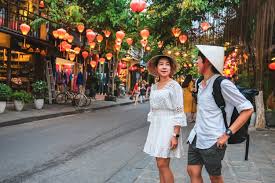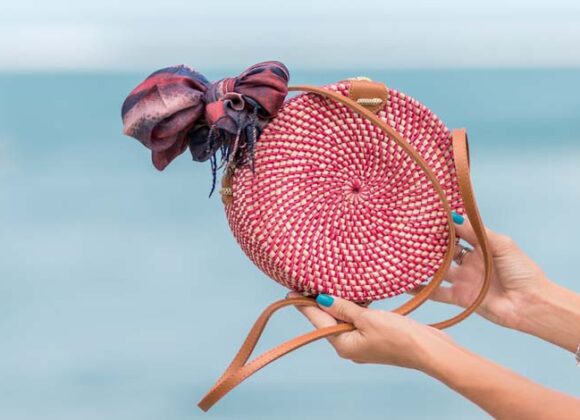Vietnam is a country of breathtaking contrasts—lush mountains, bustling cities, serene beaches, and ancient temples. But with its diverse geography comes an equally varied climate, making packing for Vietnam a bit of a puzzle. Whether you’re trekking in Sapa, cruising in Ha Long Bay, or exploring the lantern-lit streets of Hoi An, knowing what to wear in Vietnam is essential for comfort, style, and cultural sensitivity.
This guide will walk you through everything you need to know about outfits in Vietnam—from seasonal clothing tips to cultural etiquette, regional differences, and packing hacks. Let’s dive in.
🌦️ Understanding Vietnam’s Climate: The First Step to Dressing Right
Vietnam stretches over 1,000 miles from north to south, which means the weather can vary dramatically depending on where you are and when you visit.
- Northern Vietnam (Hanoi, Sapa, Ha Long Bay): Four distinct seasons. Winters (Dec–Feb) can be chilly, while summers (May–Aug) are hot and humid.
- Central Vietnam (Hue, Da Nang, Hoi An): Hot and dry from Jan–Aug, with a rainy season from Sep–Dec.
- Southern Vietnam (Ho Chi Minh City, Mekong Delta, Phu Quoc): Tropical climate with two seasons—wet (May–Nov) and dry (Dec–Apr).
Understanding this climate breakdown is key to choosing the right clothes to wear in Vietnam.
👗 Seasonal Packing Guide: What to Wear in Vietnam Year-Round
🏞️ Spring (March–May)
Spring is one of the best times to visit Vietnam. The weather is generally mild and pleasant across the country.
- Northern Vietnam: Light layers like cotton shirts, long-sleeved tops, and jeans. Mornings and evenings can be cool.
- Central & Southern Vietnam: Breathable fabrics such as linen, rayon, and moisture-wicking materials. Expect rising temperatures and humidity.
Outfits in Vietnam for Spring:
- Maxi dresses or midi skirts
- Lightweight trousers or joggers
- Short-sleeved shirts and polos
- Comfortable walking shoes or sandals
☀️ Summer (June–August)
Vietnam’s summer is hot, humid, and rainy—especially in the north and south. Central Vietnam remains relatively dry.
- All Regions: Opt for lightweight, quick-dry clothing. Avoid heavy fabrics like denim.
- Rainy Season Tip: Pack a compact umbrella or rain poncho.
Clothes to Wear in Vietnam During Summer:
- Tank tops and breathable t-shirts
- Shorts or skirts made of cotton or linen
- Flip-flops or waterproof sandals
- Wide-brimmed hat and sunglasses
🍂 Autumn (September–November)
Autumn brings cooler temperatures and less rainfall, especially in the north. It’s a great time for trekking and sightseeing.
- Northern Vietnam: Sweaters, hoodies, and long pants for cooler evenings.
- Central & Southern Vietnam: Summer wear still works, but bring a light jacket for travel.
Outfits in Vietnam for Autumn:
- Long-sleeved tops and cardigans
- Lightweight jackets
- Ankle boots or sneakers
- Scarves for layering
❄️ Winter (December–February)
Winter in Vietnam varies greatly depending on the region.
- Northern Vietnam: Cold and misty. You’ll need warm layers, especially in mountainous areas like Sapa.
- Southern Vietnam: Still warm and sunny—perfect for beachwear.
Clothes to Wear in Vietnam During Winter:
- Fleece jackets or down coats (for the north)
- Thermal leggings or jeans
- Beachwear and light dresses (for the south)
- Closed-toe shoes or boots
🧘 Cultural Etiquette: Dressing Respectfully in Vietnam
Vietnamese culture values modesty, especially in religious and rural settings. While urban areas are more relaxed, it’s important to dress appropriately in certain contexts.
🛕 Temples and Pagodas
- Cover shoulders and knees.
- Avoid tight or revealing clothing.
- A scarf or shawl can be used as a cover-up.
🏘️ Rural Areas
- Modest clothing is appreciated.
- Avoid tank tops and short shorts.
🏙️ Urban Areas
- Casual Western wear is acceptable.
- Avoid overly flashy or provocative outfits.
Pro Tip: Always carry a lightweight scarf or sarong—it’s versatile and respectful.
🥾 Footwear Guide: What Shoes to Pack
Vietnam’s terrain ranges from city streets to jungle trails, so your footwear should match your itinerary.
- City Exploration: Comfortable walking shoes or sneakers.
- Beach Days: Flip-flops or sandals.
- Trekking: Hiking boots or trail shoes.
- Rainy Days: Waterproof shoes or quick-dry sandals.
🎒 Packing Essentials: Beyond Clothes
Here are a few must-have accessories to complement your outfits in Vietnam:
- Sunscreen & Sunglasses: The sun can be intense, especially in the south.
- Bug Spray: Mosquitoes are common in tropical areas.
- Reusable Water Bottle: Stay hydrated while reducing plastic waste.
- Rain Gear: A foldable umbrella or poncho is a lifesaver during the wet season.
- Daypack: For carrying essentials during day trips.
🧳 Packing Tips for Smart Travelers
Packing for Vietnam doesn’t mean stuffing your suitcase. With a few smart strategies, you can travel light and still be prepared.
- Mix & Match: Choose neutral colors and versatile pieces.
- Layering: Pack clothes that can be layered for changing temperatures.
- Wrinkle-Free Fabrics: Ideal for travel and quick drying.
- Laundry Access: Many hotels and hostels offer laundry services—pack less and wash as you go.
🏖️ Regional Style Tips: What to Wear in Vietnam by Destination
🏔️ Sapa & Northern Highlands
- Cold in winter, mild in summer.
- Pack warm layers, gloves, and a beanie for winter treks.
- Hiking gear is essential.
🏙️ Hanoi & Ho Chi Minh City
- Urban chic meets casual comfort.
- Stylish jeans, polos, and sneakers work well.
- Avoid overly revealing outfits.
🏖️ Da Nang, Nha Trang & Phu Quoc
- Beachwear is acceptable but avoid walking around town in swimsuits.
- Light dresses, shorts, and sandals are perfect.
- Don’t forget a cover-up for beach-to-town transitions.
🏮 Hoi An
- Known for its tailor shops—get custom outfits made!
- Lightweight, breathable fabrics are ideal.
- Stylish yet modest clothing fits the vibe.
🧵 Shopping for Clothes in Vietnam
Vietnam is a great place to shop for clothes—whether you’re looking for custom-made outfits or budget-friendly fashion.
- Hoi An Tailors: Famous for bespoke suits, dresses, and shirts.
- Local Markets: Great for picking up scarves, hats, and casual wear.
- Modern Malls: Found in major cities like Hanoi and Ho Chi Minh City.
Tip: Bargaining is common in markets—don’t be shy!
🧑🤝🧑 Gender-Specific Tips
👩 Women
- Maxi dresses and skirts are both stylish and respectful.
- Avoid low-cut tops in rural or religious areas.
- Sports bras and leggings are great for active days.
👨 Men
- Polo shirts and chinos work well in cities.
- Tank tops are fine for the beach but not temples.
- Lightweight button-downs offer style and sun protection.
🧳 Sample Packing List for 2 Weeks in Vietnam
Here’s a quick checklist to help you pack smart:
Clothing:
- 4–5 t-shirts or tops
- 2–3 pairs of shorts
- 2 pairs of long pants
- 1–2 dresses or skirts
- 1 lightweight jacket
- 1 rain poncho or umbrella
- 1 swimsuit
- 1 pair of hiking shoes
- 1 pair of sandals
Accessories:
- Sunglasses
- Hat
- Scarf or shawl
- Bug spray
- Sunscreen
- Daypack
✈️ Final Thoughts: Dress Smart, Travel Happy
Vietnam is a land of contrasts—weather, culture, and terrain. Dressing appropriately not only keeps you comfortable but also shows respect for local customs. Whether you’re sipping coffee in Hanoi, hiking through rice terraces, or lounging on a beach in Da Nang, the right outfits in Vietnam will enhance your experience.
So pack smart, dress light, and embrace the adventure. Vietnam is waiting—and now you’re ready to explore it in style.




